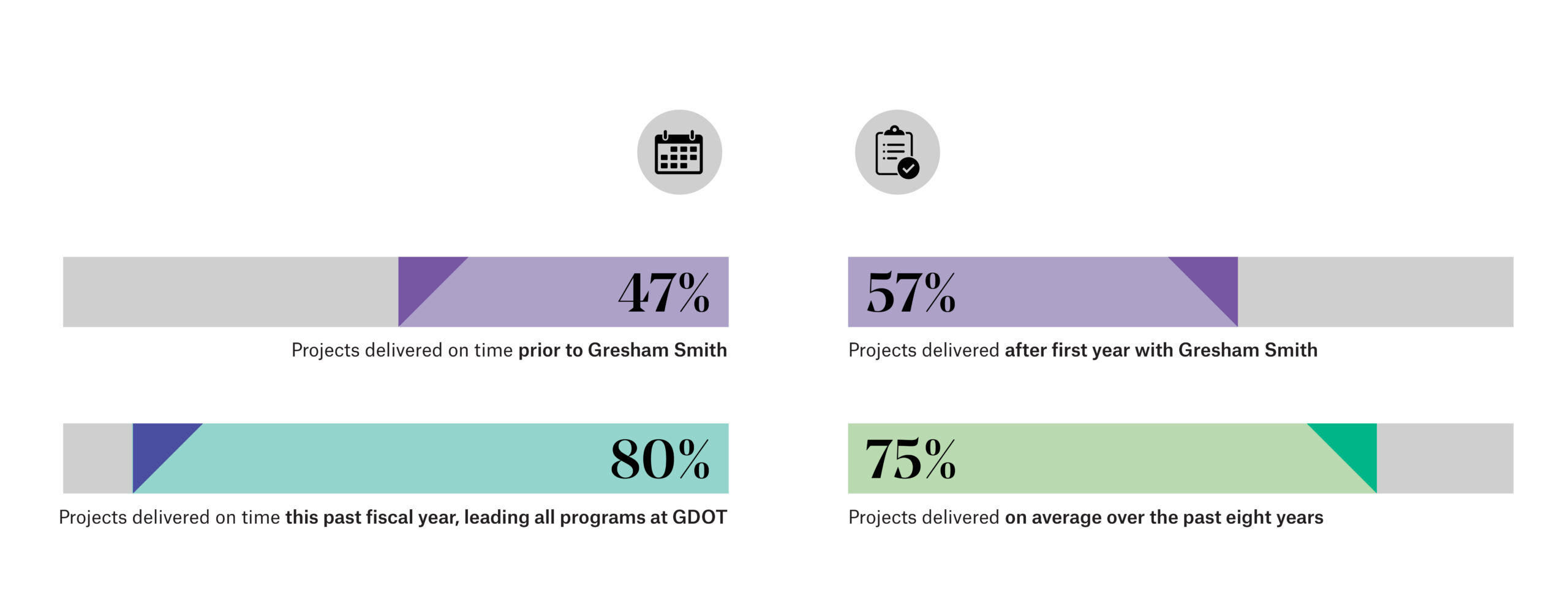In today’s climate, cities of all sizes face a variety of challenges to deliver infrastructure improvements. Those constraints may be related to labor and the challenges cities face in recruiting the right candidates, while many more experienced civil servants near retirement, taking with them the institutional knowledge that keeps a department running. Other issues include the rapid pace of changing technology, which can make it a challenge for agencies to keep up. For others, new funding mechanisms may provide a welcome influx of revenue, but they often come with complex requirements that require specialized teams to manage.
While larger organizations across the country regularly depend on engineering and consulting firms to deliver program management services, this concept may sound somewhat foreign to a lot of agencies that have never considered bringing on a program management partner before.
Implemented fully, program management can mean having an outside partner come on board to manage a large, typically multi-year program of hundreds of projects with a dedicated funding component, where the partner firm assists with everything from scheduling, budgeting, data analytics and so on. However, a variety of more scalable approaches exists for agencies of any size.

How to Take Advantage of a Scalable Approach
Program management can be a big enterprise, but it doesn’t have to be. Programs can be scaled into several components to meet needs at different levels or combined for a comprehensive approach. With a more coordinated approach, an effective program manager packages a group of interdependent tasks or similar, individual projects that are related to be managed in a coordinated way. With this strategy, agencies get a larger benefit from the coordinated approach: efficiency, streamlining, process improvement, institutional knowledge, etc.
Below, we offer three potential approaches with varying levels of commitment and expense, including staff augmentation, task management, and program management.
Staff Augmentation
Staff augmentation is as simple as identifying gaps in your team, whether you’re having trouble hiring for a specialized role or losing institutional knowledge to retirement, and then finding the right talent to fill those roles. For instance, in Georgia, we support our Fulton County client with staff augmentation to assist with developer plan reviews. The County is experiencing rapid growth and development, which has contributed to an increase in plan submittals being received by the Department of Public Works. We provide staff augmentation to support this effort with all aspects of managing a large utility. We also assist in the acquisition of encroachment permits from the Georgia Department of Transportation (GDOT) to install water and sewer within GDOT’s right-of-way (ROW).
Task Management
In many growing cities around the country, state legislatures have created funding mechanisms that allow cities and municipalities to call for a referendum to dedicate a portion of tax dollars to future infrastructure improvements. In Georgia, those programs are called Transportation Special Purpose Local Option Sales Tax—or T-SPLOST—and we have assisted a variety of clients with projects under those programs. For example, in Sandy Springs, under a program established by a T-SPLOST, we provide ROW acquisition services and easements for the City. Our range of services for clients includes ROW detailed cost estimate, property appraisal, negotiation, deed preparation, relocation assistance, property management, and final disposition of property either by closing or condemnation for project certification.

Program Management
In 2015, Georgia Gov. Nathan Deal signed the Transportation Funding Act into law, which increased the GDOT funding and program projects by 50%. As a result, the state Legislature tasked GDOT with using the increased funding to deliver more projects and faster while maintaining current state employee levels. To address this challenge, GDOT selected Gresham Smith to manage its Traffic Operations and Safety program under a five-year program management contract. Under the program, we’re delivering more than $1 billion in combined projects.
GDOT relies on us to deliver on one of their most important programs. We manage projects that focus on reducing crash frequency and severity and reduce travel delays at intersections and on corridors. This includes pedestrian safety. GDOT tasked us with meeting roadway safety goals in the short term, while also achieving a more efficient delivery long term for these programs and projects—so they bundled them together as a program. This program is managed by a single entity so that we can evaluate data, create new processes or right-size existing processes, and champion them throughout the agency.
This resulted in streamlined operations and the development of new tools that help project managers prioritize their tasks. It also allowed for a stronger focus on training and developing a team that fully understood the goals of the Safety and Operations program to ensure they were delivered on time.
Ultimately, to overcome these challenges and trends—and to meet strategic goals without interruption—public agencies and organizations require an infusion of new knowledge, resources, expertise and technologies into their organizations. Consider a scalable approach to program management to help address your organization’s institutional needs.













